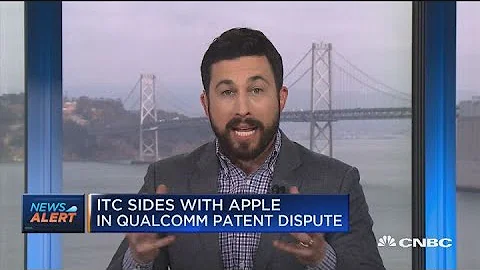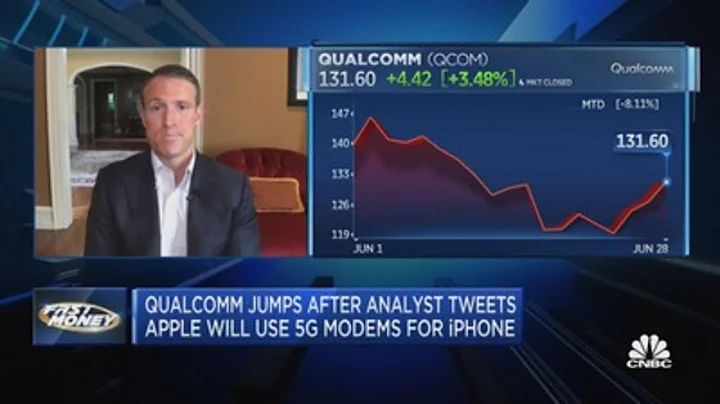
Speaking of the “great reconciliation” in the IC circle this year, in the first half of the year, Apple and Qualcomm ended their long-running lawsuit in an instant. After the settlement, Apple's 5G baseband was finalized and Qualcomm's important customers returned, which is undoubtedly a win-win situation. In the blink of an eye, in the second half of the year, the same "reconciliation" was staged in the foundry industry. Where should we start?
Dating back to August this year, foundry Globalfoundries filed multiple legal lawsuits in the United States and Germany, accusing TSMC of infringing 16 of its patents by the semiconductor production technology used. While initiating the lawsuit, GlobalFoundries also applied for an injunction from the court to prevent products produced by TSMC using infringing technology from being imported to the United States and Germany.
GF accused TSMC at that time that the scope of TSMC's infringing processes covered the latter's huge range of 28nm to 7nm, and downstream customers who used these process OEM products also became GF's defendants, including Apple, Broadcom, Nvidia, etc. 20 companies. In addition, GlobalFoundries’ prosecution scope even includes three component distributors.
GlobalFoundries has launched an all-round attack on TSMC’s supply chain and will inevitably demand a commensurate amount of compensation. However, GlobalFoundries has not disclosed specific figures from beginning to end, only emphasizing that it is a “huge amount.” In response to this lawsuit, TSMC emphasized that it will do its best to fight back in every possible way. Afterwards, TSMC countersued GlobalFoundries for patent infringement in many places around the world and demanded huge compensation.
Just when the smell of litigation became more intense, the two foundries chose to reach an out-of-court settlement and signed a patent cross-licensing agreement with a validity period of 10 years. The litigation battle that lasted more than two months came to an end. The so-called patent cross-licensing means that both parties, in accordance with corresponding conditions, each take out technologies and patents within the specified scope, and the other party also has the right to use them. Generally speaking, when two companies reach a patent cross-licensing agreement, it will help resolve disputes, avoid costly litigation, and at the same time remove patent obstacles to their respective development. It will generally play a positive role.
As for GF and TSMC specifically, what will be the impact of patent crossover? For GlobalFoundries, it has reaped a lot of benefits by first filing a lawsuit and settling later. By acquiring some TSMC patents through cross-licensing, GlobalFoundries can obviously increase its value and lay a better foundation for future IPOs. Secondly, in order to reconcile, TSMC will definitely pay a certain amount of money to GlobalFoundries, which will also enrich the latter's cash flow and be beneficial to daily operations.
For TSMC, the most important thing now is to expand production capacity, tackle 5nm and 3nm processes, and reconcile and cores at a small price in exchange for a safe and stable operating condition. In addition, many downstream customers were also sued along with TSMC. TSMC's settlement with GlobalFoundries is equivalent to writing off this account, thereby maintaining its customer-oriented industrial image.
Judging from the results, the settlement between GF and TSMC is beneficial to each other, so what are the reasons for this settlement? The reason is that the patent layout of the foundry industry is complicated, and neither company has an absolute chance of winning a lawsuit. At this stage, although the competitive fields of TSMC and GlobalFoundries do not overlap, there are still many patents that are related to each other, and their origins can be traced back a long time ago.
There is such a thing that can reflect this situation. Earlier reports pointed out that TSMC founder Zhang Zhongmou had a "mistake" in not acquiring IBM's semiconductor business, which led to GlobalFoundries later acquiring the business and subsequently obtaining a large number of patents. This matter is equivalent to today's The lawsuit laid the groundwork.
From this point of view, GF is obviously well-prepared for launching a comprehensive lawsuit against TSMC. If the patent ownership of the two foundries is further investigated, the litigation will inevitably be protracted, and their normal operations may be affected by then. . Therefore, the two foundries have now reached a patent crossover, which not only eliminates obstacles to their respective development, but is also conducive to the stability of the industry.
examines the background of the two major "reconciliations" in the IC industry this year. Against the background of sluggish growth in consumer electronics and automobile sales, as well as the intensification of trade disputes between China, the United States, and Japan and South Korea, various industry data indicate that this year will be a "bad year" for semiconductors. "There are indeed not many industry opportunities, and each company can only place its hope on a few areas such as 5G and struggle to maintain profitability levels.
From this point of view, in the first half of the year, Apple and Qualcomm were re-established, and the industrial environment factors accounted for an important proportion. After all, it is better for both parties to jointly deploy 5G than to fight for costs through litigation. The impetus for the "reconciliation" in the wafer foundry industry in the second half of the year is also the same. There are already few industrial opportunities, and being immersed in litigation at this time will not be conducive to the operation of the two major foundries, nor is it conducive to the stability of the industry.
then turns its attention back to the foundry industry. After the settlement between GF and TSMC, the former will rely on FD-SOI technology to serve customers in the 5G and automotive electronics fields in the future, while the latter will still focus on advanced technology to serve high-end customers. In general, the two companies will still follow their own paths like two parallel lines and widely benefit from the upcoming 5G era.





















